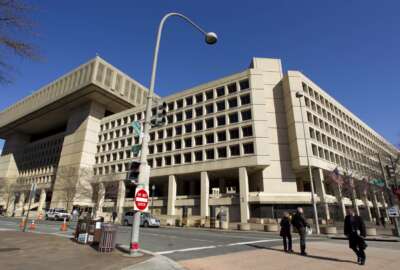

Dan Mathews, the commissioner of GSA's Public Building Service, said Tuesday that the agency will focus the bulk of its attention in the coming years on...
The General Services Administration sees a “huge opportunity” to drive down the inventory of leases it manages on behalf of agencies over the course of the next five years.
During that time, about half of the leases in GSA’s 8,000-lease portfolio will expire. Those lease agreements add up to about $3 billion in annual rent payments for more than 100 million square feet of leased federal real property.
Dan Mathews, the commissioner of GSA’s Public Buildings Service, said Tuesday that the agency will focus the bulk of its attention in the coming years on right-sizing about 1,100 of the 4,000 leases that make up the “vast majority” of the federal real property spend.
“We’re focusing our efforts on those leases that have the greatest potential return on investment. Not every transaction is the same – we shouldn’t be knocking ourselves out trying to right-size a 6,000 square foot lease when we’ve got a 600,000 square foot lease that takes almost as much time to replace, given all the government rules and hurdles that go along with replacing the lease,” Mathews said at the Asset Leadership Network’s summit on federal asset management in Washington. “So we’re focusing our effort on where the money is, so we can return it to agencies, so they can put it on mission.”
Federal real estate issues have garnered attention under the Trump administration – including a decision to keep the FBI headquarters in downtown D.C. and pending lawsuits concerning the Trump Hotel across the street on Pennsylvania Avenue – but under the hood at most agencies, terminating expensive leases can lead to more spending on the workforce and modernizing IT.
“Agencies are making tough choices. They’re choosing between people and real estate, in many cases, and every dollar that we spend on property that we don’t really need is one less dollar agencies have for meeting their mission,” Mathews said.
Under the Obama administration, the Office of Management and Budget in 2013 issued a “Freeze the Footprint” initiative aimed at reducing a year-over-year increase in agency leases.
GSA projects that the initiative will reduce government leases by about 9.6 million square feet by 2020, and will save about half a billion dollars in rental payments.
Mathews said he expects the 1,100 expiring leases will yield comparable savings.
“Those leases have not gone through Freeze the Footprint,” he said. “They’re not in modern-day utilization rates.”
However, in the same period of time, the amount of real property owned rentable property by the government has increased by about 3.5 million square feet.
“What that tells you [is] it’s a lot harder to get rid of an owned piece of property than it is to get out of a lease,” Mathews said.
As the wave of expiring lease rolls in, GSA is working with of agencies to help them right-size their real estate portfolios.
In reviewing the owned and leased property portfolio of an agency that Mathews declined to name, GSA saved that agency $13 million in annual rent payments.
GSA itself has taken big steps to reduce its office footprint. In July, GSA Administrator Emily Murphy announced the agency would consolidate its National Capital Region office into its main building on 1800 F St. NW in Washington.
The move will add about 1,000 people to GSA’s headquarters, but Mathews said the agency had accurate data to back up its decision.
GSA employees swipe in and out of the headquarters building using their Personal Identity Verification (PIV) cards, giving the agency a real-time count of how many personnel are in the building.
“We know, given the data – we’ve got good data on the utilization of this building – we can accommodate all of them in this building,” Mathews said. “We know exactly how many people are in our building. We even know where they sit every day. That told us we can do better. We can actually do a lot better.”
While GSA sees improvements in how it manages its assets, the government still has some ways to go before it catches up with the efficiency of the private sector.
“They don’t have empty chairs, and that’s important to them, because they need to stay competitive and profitable,” Mathews said. “So we’re taking a hard look at our portfolio on the lease and the owned side to right-size and improve our utilization.”
Copyright © 2025 Federal News Network. All rights reserved. This website is not intended for users located within the European Economic Area.
Jory Heckman is a reporter at Federal News Network covering U.S. Postal Service, IRS, big data and technology issues.
Follow @jheckmanWFED

